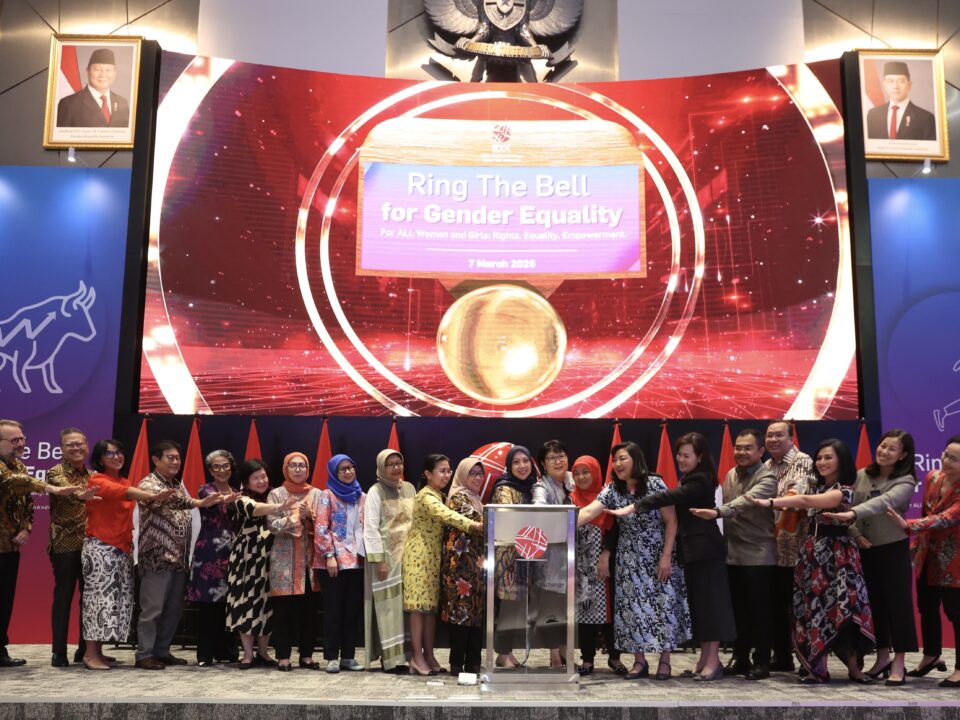
Workers Equality Rights
December 24, 2023
What is the Relationship Between Gender Equality in the Workplace and Climate Sustainability?
December 24, 2023Photo by Thirdman
Gender equality is still often considered “only” as a women’s issue. Even after decades of progress toward making women equal partners with men in the economy and society by various parties, the gap between men and women remains large, especially in the workplace, which hasn’t changed much from year to year.
This can be seen from the Labor Force Participation Rate figures for August 2021, where the male workforce is 82.27 percent while the female workforce is 53.34 percent. In the same month of 2019, the male workforce was 83.25 percent and the female workforce was 51.81 percent. This figure is a reflection of the patriarchal culture in Indonesia which is still rooted and identifies work in the domestic sphere as being attached to the role of women.
The results of research conducted by the International Labor Organization (ILO) show that organizations with greater gender diversity tend to have higher profits, as well as attract and retain the best talent. Research on 416 national and international companies in Indonesia in 2020 showed that 66 companies had proven to have experienced improvements in employee performance, productivity, creativity and innovation. In addition, the data also revealed that as many as 32 percent of companies experienced an increase in profits of up to 5-10 percent, and even 18 percent of companies experienced an increase in profits of up to 15-20 percent.
Regardless of the results of this research, the reality is there are still many men who have biases and stereotypes against women, as well as the notion that women are less capable of carrying out certain tasks, especially to become leaders.
Yet, in order to make progress towards gender equality in the workplace, men need to be involved. But zero-sum bias (a bias where it’s all about competition) often discourages men from engaging in conversation (let alone taking action) because it fuels the belief that men must sacrifice resources or themselves for women to gain a place or position. Although zero-sum thinking is invalidated by data, it does influence the workplace equality narrative.
Gender equality is also an issue for men because patriarchal culture also harms them. The culture of traditional masculinity is often synonymous with stoicism, competitiveness, domination and aggression which are all dangerous. Because the majority of the way men are brought up to be independent and able to take care of themselves, thus holding onto feelings that signify everything is not okay.
Men who keep something inside themselves, see that no other men share whatever conflicts they feel. It makes them feel isolated. They feel all alone. Feeling weak. They don’t feel well. They don’t realize that there are other men who are also holding onto personal thoughts, emotions and conflicts. This behavior can lead to depression and even end his life. Globally, the suicide rate for males is more than double that for females. According to Global Health Data Exchange data, in 2017 the global suicide rate for women was 6.3 deaths per 100,000 and for men, it more than doubled that rate at 13.9 per 100,000. Meanwhile, the suicide rate in Indonesia is 4.73 for men and 1.55 per 100,000 women.
The point is to understand that men may experience tremendous pressure to comply with the rules around masculinity they have learned in their own cultural context.
Gender equality can be achieved by changing the paradigm or mindset of men to share space with women and together become the subject of company progress. In the context of patriarchal culture, discussing gender equality in the male community is a challenge. This is due to the fact that for years gender equality programs have only targeted women’s groups, and very few programs have targeted men. With gender equality, men have more freedom in how they express themselves and face less pressure to conform to the existing stereotypes. This extends to the career field, too, as no job is considered “only for women or only for men.” Men also receive parental leave and family time without discrimination. Increased freedom of expression and flexible work options that lead to comfortable work.
So it is very important to involve men in gender equality programs. Including at every level of the organization by utilizing various spaces to discuss diversity and inclusion policies that aim to close the gender gap. Encouraging men to be part of the conversation helps them to understand the benefits and opportunities of doing so.
In the corporate context, organizations can form such discussion initiatives consisting only of men so that they are free to voice their opinions and can also get a little enlightenment about what gender equality really is in the workplace. This is to provide space for men to reflect on their privileges in a patriarchal society.
Of course, these changes will be more effective when they come from the top of the organization. Company leaders can change the corporate culture to be more inclusive through gender equality policies and programs in the workplace. One example is a male leader who sponsors one of the best female subordinates in the company. Sponsorship programs have been carried out in several companies in Indonesia and can be an opening for female talent in companies and an important step towards gender equality in the workplace.
The essence of gender equality is ensuring that women and men have equal opportunities, access, and participation. In an effort to realize gender equality, men have a role to share space and support women to develop and seize the widest possible opportunities. This is not the time to argue about the different roles of men and women, now is the time for women and men to collaborate to create gender equality that will benefit both genders.
15 January 2023 | Maya Juwita, Executive Director of the Indonesia Business Coalition for Women Empowerment (IBCWE) and Policy Manager of WiBAC B20 Indonesia





